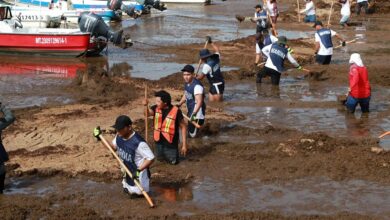How is Latin America doing with the Sustainable Development Goals?
At the pace of the region, it is likely that the Sustainable Development Goals agreed for 2030 will not be achieved .

Under the current circumstances, the goals for sustainable development in the region may not be met. / Photo: Pexels
LatinAmerican Post | Juliana Suárez
Listen to this article
Leer en español: ¿Cómo va América Latina con los Objetivos de Desarrollo Sostenible?
The SDG Center for Latin America and the Caribbean at the Universidad de los Andes (Colombia) and the Sustainable Development Solutions Network presented the first report from the region to assess how the UN Sustainable Development Goals are being accomplished in more than 100 countries. From this installment, every year until 2030, this report will be published, which will allow countries to evaluate their performance around the SDGs.
The Sustainable Development Goals were 17 points agreed by the UN that each member country promised to fulfill in order to create a more sustainable world. The countries that are part of it promise that by 2030 they will have improved in each of those aspects that go from nature to poverty and well-being.
In the report presented, it is possible to see how each country is doing in the framework of compliance and it is also possible to compare the progress of each one taking into account different variables in each of the 17 objectives. For example, as reported by El Tiempo, there are examples of countries that despite the conditions, have managed to outperform other countries with more developed economies. Such is the case of Ecuador, that with a low GDP managed to surpass Panama, Brazil, Argentina, and Mexico.
In any case, the outlook for the region shows slower progress than it should, which has led to delays in some areas. “The results show a lag in the fulfillment of the SDGs in Latin America and the Caribbean. After four years of the approval of the 2030 agenda, the average of the ODS Index in the region stands at a score of 63.1 out of 100, ”said the CODS.
Also read: Countries must work together on CO2 removal to avoid dangerous climate change
In his foreword, the president of the University of the Andes, Alejandro Gaviria, states that "the indicators analyzed in this report show that the pace of progress towards the fulfillment of the SDGs by 2030 was not expected and that if this trend continues, goals set could not be achieved even in the next 50 years. ”
The idea of this project is to be able to have a clear vision of how the region is. For this, this first report also highlighted the lack of information on some points that make it difficult to create more concrete scenarios. For this reason, and although the efforts of the States were recognized, governments were also urged to provide more access to data.
In the results, Chile, Uruguay, and Costa Rica are those that appear with the best score in total, while Guatemala, Haiti, and Guyana are in the last positions and have the greatest lags in compliance with the SDGs.
Regarding the objectives, the ones with the best scores were SDG 6, clean water and sanitation, and SDG 13, climate action. However, the fact that they have the highest scores does not mean that they are doing well, because according to the report, for example in SDG 6, “the increase in coverage of health services and access to drinking water has not been matched by a necessary improvement in quality in the provision of these services ”. In SDG 13, although in some parts of the region the emission of greenhouse gases has decreased, in others such as Argentina, Chile or Venezuela, they have been growing. This shows the importance of not generalizing on the objectives and continuing to work on them.
On the other hand, those with the lowest scores were SDG 9, industry, innovation and infrastructure, and SDG 10, reduction of inequalities.
The goals and the pandemic
The results of this first report evaluate the first four years, from 2015 to 2019. This means that what was found does not include the last months, excluding a factor that may be key from now on and that is the management of the SDGs after the pandemic.
Some of the objectives are closely related to the quality of life of citizens, which has been affected after the coronavirus and will continue to be affected in the following months. Among those who will be the most crippled will be the objective of decent work and economic growth, since a high percentage of workers in Latin America are informal, who are seeing their livelihood in danger due to the consequences of confinement and restriction measures.
Similarly, said Gaviria, that “in SDG 1 end of poverty and SDG 10 reduction of inequalities, the decline will be several decades. With regard to SDG 16, peace, justice and solid institutions will also deteriorate due to the social conflicts that will arise and the weakening of institutions in various countries of the region due to the social and economic crisis. ”
#UnNuevoFuturo ¿Qué ha revelado la pandemia del Covid-19 sobre nuestra forma de habitar el planeta? Aquí un apartado de la entrevista con @agaviriau Para leerla, siga al siguiente enlace https://t.co/aw1btHa3By pic.twitter.com/zwCGcMjMMO
— Centro ODS para América Latina y el Caribe (@CentroOds) June 18, 2020
Jeffrey Sachs, an American economist expert in sustainable development, told El Espectador, that "the SDGs will not be achieved if there is no control of the pandemic", since if the epidemic is not contained, it will be even more difficult to create good jobs or improve the educational system.
Thus, this report is an invitation to think of a balanced way to act taking into account this new variable. Similarly, the initiatives and leadership of the leaders of the region to consolidate economic growth while facing the current health emergency are in question.




